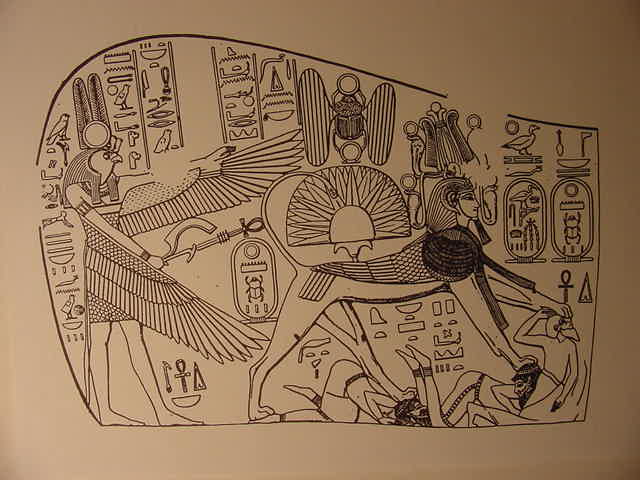Line drawing of a wooden sidepanel from Pharaoh Thuthmose IV's throne found in his tomb. He is shown as a winged sphinx trampling Egypt's Asiatic enemies.
(p.123. William Stevenson Smith. Ancient Egypt, as represented in the Museum of Fine Arts, Boston. Boston. Metcalf & Company. 1960)
